#ONE EYED/CYCLOPS LOVERS UNITE
Text

I LOVE ONE-EYED CHARACTERS
THEY ARE MY FAVORITES SO FAR
#ONE EYED/CYCLOPS LOVERS UNITE#ALIGHT I HAVE TO TAG TONS OF CHARACTERS#dpt#portal#glados#wheatley#adventure core#fact core#aperture desk job#grady#turret#atlas#p-body#and the portal 1 cores i forgot to add them :(#and defective turret.......#borderlands#claptrap#CL4P-TP#shadowtrap#5H4D0W-TP#AND DEATHTRAP OMG#tales from the borderlands#space core#portal stories: mel#virgil#loader bot#fl4k#fl4k the beastmaster#2001: a space odyssey#hal 9000
416 notes
·
View notes
Text
Karlemon’s Lands: Isagor (continued)
Geography of Isagor
River Bia. The only great river that flows through Isagor, with a source in the Pylaen Hills at Lake Angarano and a mouth in the Bay of Kastokas. Famed far and wide for its rich pastoral land and steep river banks, it is now home to the river trade route between Angarano and the Vestal Sea. In spite of this, it is a dangerous course at many points; with strong riptides, sinkholes, white rapids and shallow rock beds all along its sides.
The Lysandrian Strait. Named for a famous poet of the Elvahen Era, the strait is a highly dangerous body of water to navigate, filled with reefs and whirlpools. Said in former times to be the home of various monsters and ravenous creatures, it runs between mainland Isagor and the southern landmass; called Ixion and Doros respectively. It is not difficult to cross, merely to traverse.
The Isle of Oenale. Said to be the birthplace of the Lydian gods, it is home to the largest collection of Lydian idols and effigies in the Known World. They are stored in a cave beside the sea but hidden from the waves. Known as ‘Nethos’ Grasp’, it is a tight and harrowing experience to enter the tunnels, where it is said the gods themselves watch your every step as the veil between worlds is thinnest here.
The Isle of Helikos. Once home to a large population of beastmen, now only inhabited by the victims of a terrible wasting disease known as Black Canker who were banished from across Karlemon’s Lands to live out the rest of their days here. It is not known how the disease is spread, but local folklore tells that it is the punishment of a forgotten deity for being cast out of the pantheon in the days before the City of Kash.
The Isle of Carysos. Said to be home to a shape-shifting witch in the days of Atticus, this large island south of the mainland houses a large population of boars and wild pigs for slaughter and sale onto markets in Dalecar, Tylia and Cosima. It is also home to a small branch of the Arcanum Nobilite which studies natural magic i.e. druidry in relative seclusion and peace under the auspices of the Dhi Qaar.
Mount Lykoreia. The highest peak in Isagor, it is sacred to Bromos and a temple shrine sits atop the summit where on Midsummer’s Eve the god of fertility is worshipped in his aspect of the wolf. There are day and night long orgies of food, drink and sex, aimed at increasing the harvest in the coming months. This practice has been extant for close to two thousand years, dating back to the satyrs and centaurs who would drink here beneath the moon.
Landmarks of Isagor
Mount Orthrys. A great peak of the eastern Pylaens, Mount Orthrys is an infamous and prestigious site in Isagori culture. Formerly the site of a shrine to Elene, goddess of the moon, the notoriety of the mountain grew in stature following the Titan’s War of 1022-24 CE, when it became well-known as the final resting place of the Hell’s King, the fire giant rebel Sintan Scarbrand. The traitorous warlord was slain by the warrior and storm giant Uthal Skywatcher. who left his adversary’s corpse impaled upon the mountainside.
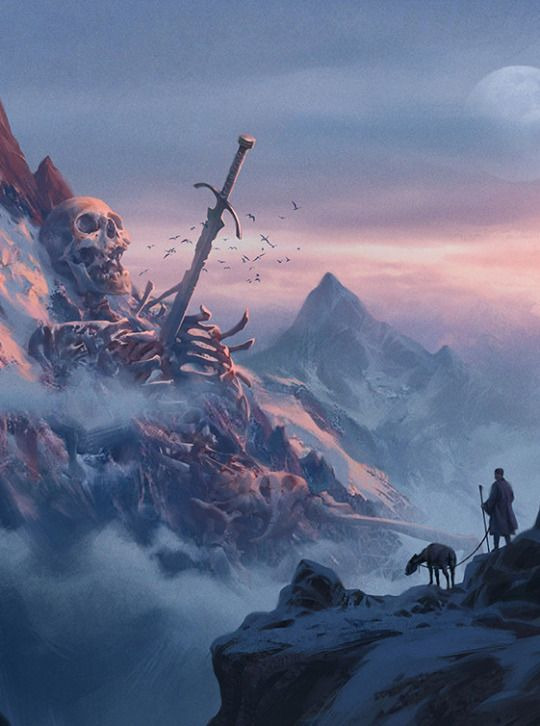
The Palace of King Nestor. Legend from the southern island of Isagor speaks of this great marble and stone palace, built as a trap for unwitting human victims following the defeat of the beastmen in open battle. ‘King Nestor’, a were-bear of a vengeful and angry temperament sought to draw in the youths of surrounding villages and sacrificing them on a green jade floor to feed the labyrinthe beast that the king had bred to hunt in the darkness below,

The Mausoleum of Antisseo. The modern day pilgrimage site for the great Cosiman bard Antisseo Macarici, it is a small and unassuming tomb at the centre of a great petrified forest, about which the bard composed his masterwork ‘The Calliopiad’. This magnum opus details the long and sordid life of Calliope, an archaic Isagori bard who had many lovers and children throughout her life whilst dodging the advances of the jealous godling Phyrixus. After Phyrixus kidnaps Calliope’s bride, she chases her tormentor into the Halls of Nethos and slays him with the help of a magical lyre.

The Stratiotai. The longest avenue in Artepolis is a monument to the great military heroes and heroines of Isagor, as sculpted by the Akademia of Jeradri. Amongst their number are counted Atticus, hero of the Nethosiad; Ursa Kalkhos, general at the Battle of Byzauros; Enkelados Thalassa, famous leader of the elite Akritoi light infantry units and Kalanthe, the heroine of the texts of the Lydaead who is represented as a servant of Solus for her military background and service.
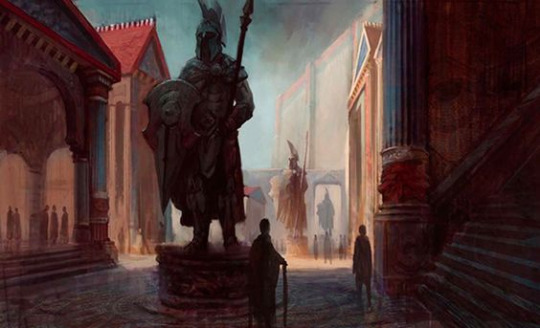
Wildlife of Isagor
Pegasus. A winged horse sacred to the early Isagori, it is a rare but welcome sight outside rural communities who interpret them as a sign of favour from local spirits or the gods.

Melagean Boar. A particularly stubborn and vicious porcine creature from the foothills of the eastern Pylaens, they are a dangerous plague on farmers during their biannual mating season.
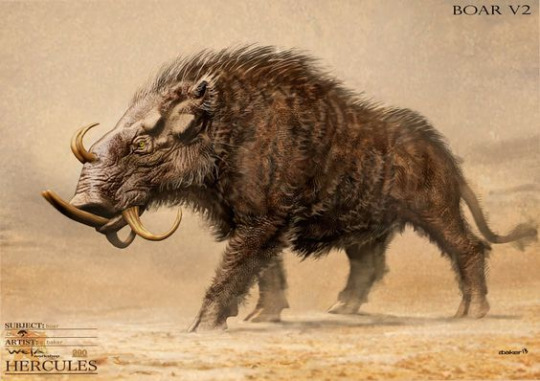
Hydra. A multi-headed serpentine creature native to the swamps of central Isagor, it was once considered a rite of passage for young men and women of the Isagori to hunt them.

Selakh. An unusual remnant of the ancient beastmen races that once dominated the lands of Isagor, these ferocious sharkmen prowl the coasts of Isagor, hunting in packs for straggling fishermen.
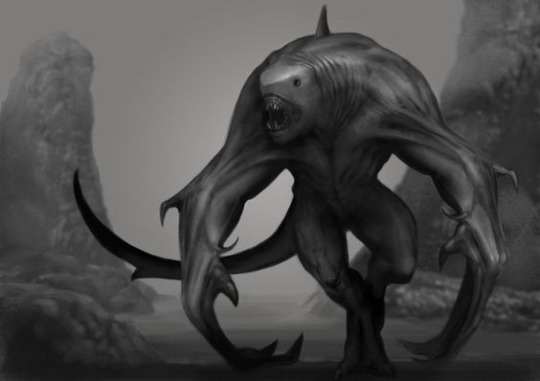
Karakond. Grey skinned goblin-like creatures from western Isagor, they are a plague on households and will try to intimidate families into leaving by imitating ghosts and demons.

Basilisk. A pot-bellied reptilian creature from the southern island of Isagor, it is a bane to travellers in the hot countryside where it paralyses its prey with a petrifying gaze before devouring them whole.
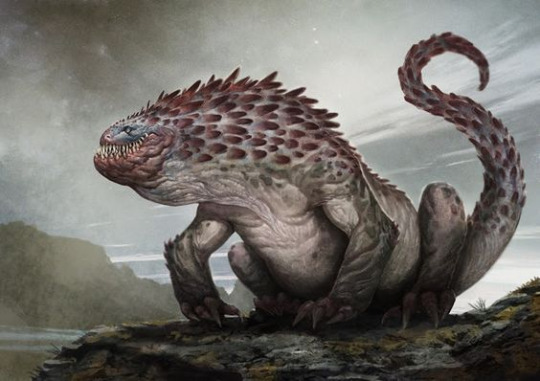
Demi-human Races of Isagor
Centaur. A nomadic people of the Pylaen Hills, they were driven south into Isagor by marauding beastmen and orcs in the millenia before the arrival of humans. They are fierce warriors and fiercer drinkers, leading to infrequent but violent clashes with human settlements.

Satyr. A diminutive goat-legged race, they live in the wilderness of Isagor enjoying a life of revelry and leisure, occasionally venturing into human villages to steal away the best-looking to join their partying for the night. Some are sworn to the retinue of Bromos, Lydian god of the wilderness and revelry.
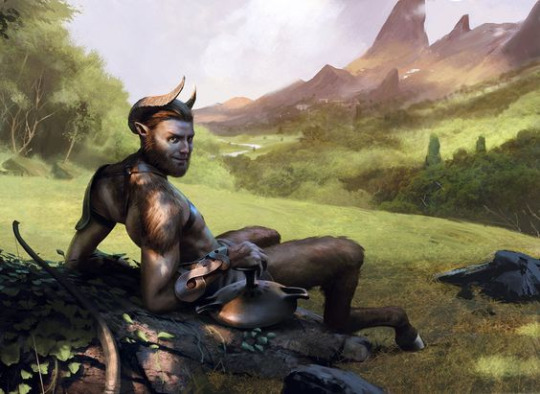
Nymph. Mischievous spirits of nature, they live bound to trees, rivers and mountains and play tricks on passing travellers, who know to leave them an offering to be left in peace. Some fall in love with humans and may leave their homes for up to a year at a time before returning to their sites to rest.

Medusa. A much-feared but rare race of near-immortals, medusae are hunted for their powers of petrification through eye contact. The majority hunt via this method, but some are more curious and hide amongst human society, learning and living as one of them for years before settling down or returning to their fellows.

Isagori Folklore
King Maides. This myth from the lands of Phylidaeia concerns a king whose vanity and love for the lustre of gold drove him mad. He tried to steal the source of the forge from Phaeston, god of mankind so that he could smelt gold from any material, even stone. For his insolence he was cursed by Nerys to ‘make his household unto gold’, meaning that he would cover every surface and retainer in golden paint, before melting down the treasury and covering his throne room and three daughters in molten gold, before drinking it himself.
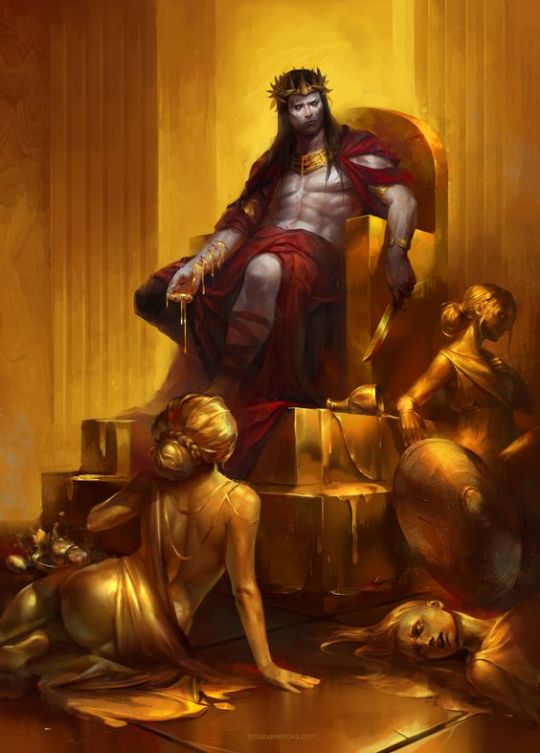
The Lydaead. Accounted by the scholar Arsinoe of Theskelos, the Lydaead is the name of a saga which informs much of the common religious thought in human lands to this day. The story follows the elderly heroine Kalanthe looking back at the end of her life and recounting to her great-grandchildren the beginning of the world. In the tale she speaks with the seneschal of the gods while dreaming after a battle and is taught about their existence and place in the heavens.

Cyclops. One eyed giants of immense size, they are rare anywhere but the remote wilderness of Isagor. They are man-eaters, and may besiege a town to gather food for long winters in the form of live captives. Isagori myth tells of their birth in the age of giants as the children of a great general of the hill giants who were all half-blinded for looking upward at the sun while it was being set in the sky and disobeying the laws of the earth.

Minotaur. A bull-headed race of beastmen resident in Isagor since long before the arrival of humans, minotaurs are for the most part savage and violent, living feral in ruined villages in the wilderness. A few individuals however, hear the call of higher powers, gaining a measure of intelligence and humanity. This can be for good or ill, as both gods and demons may compete for the loyalty of these powerful creatures.

Nethosiad. In a popular myth from Isagor, a group of mortal heroes sail into the Lydian underworld. Banished for killing Urian, son of the king Hylaeos, the hero Atticus is banished to the Underworld and told to seek the favour of his victim, where it is thought he will perish. Not deterred, he recruits a crew of thirty of the greatest heroes and heroines of his age to sail alongside him and they traverse the Far Ocean to find the Halls of Nethos. There the crew meet each of the Vanathes and must complete a task set by each before meeting Nethos himself.

Rhdanthe of Hesperidis. One of the greatest satires and farces ever written, it is also one of the most violent plays ever performed. Known as the playwright Antigone’s masterwork, the Tragedy of Rhdanthe of Hesperidis details the tale of a self-aware princess in the court of Gerenion, father of Maides, who is constantly avoiding the hyperviolent and nonsensical deaths of her fellows and family members, all of whom are patisches and parodies of other famous tragic characters of Common Era. Written as a criticism of the tragic tradition, it is considered to be one of the most important works of theatre ever made by human hands.
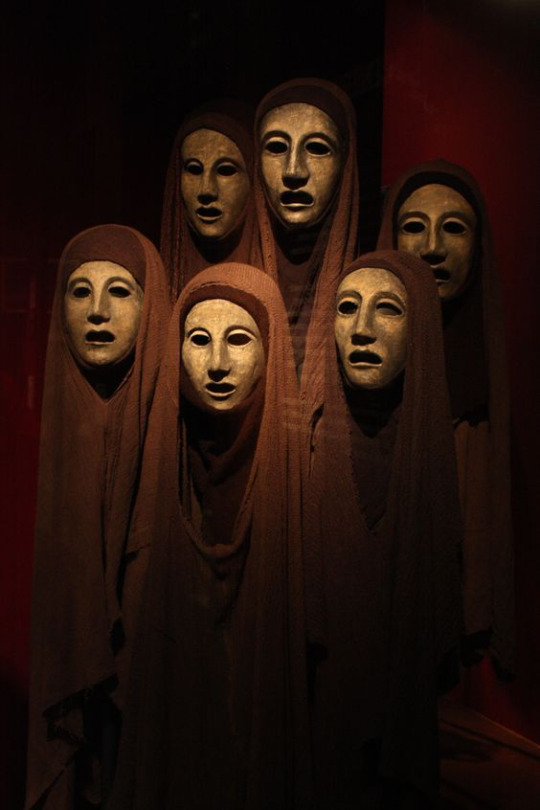
2 notes
·
View notes